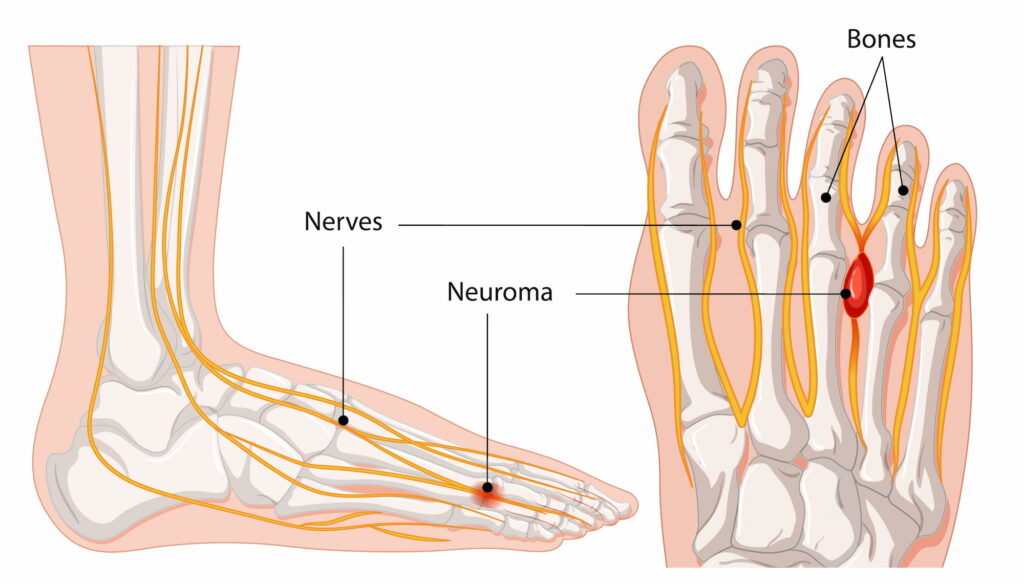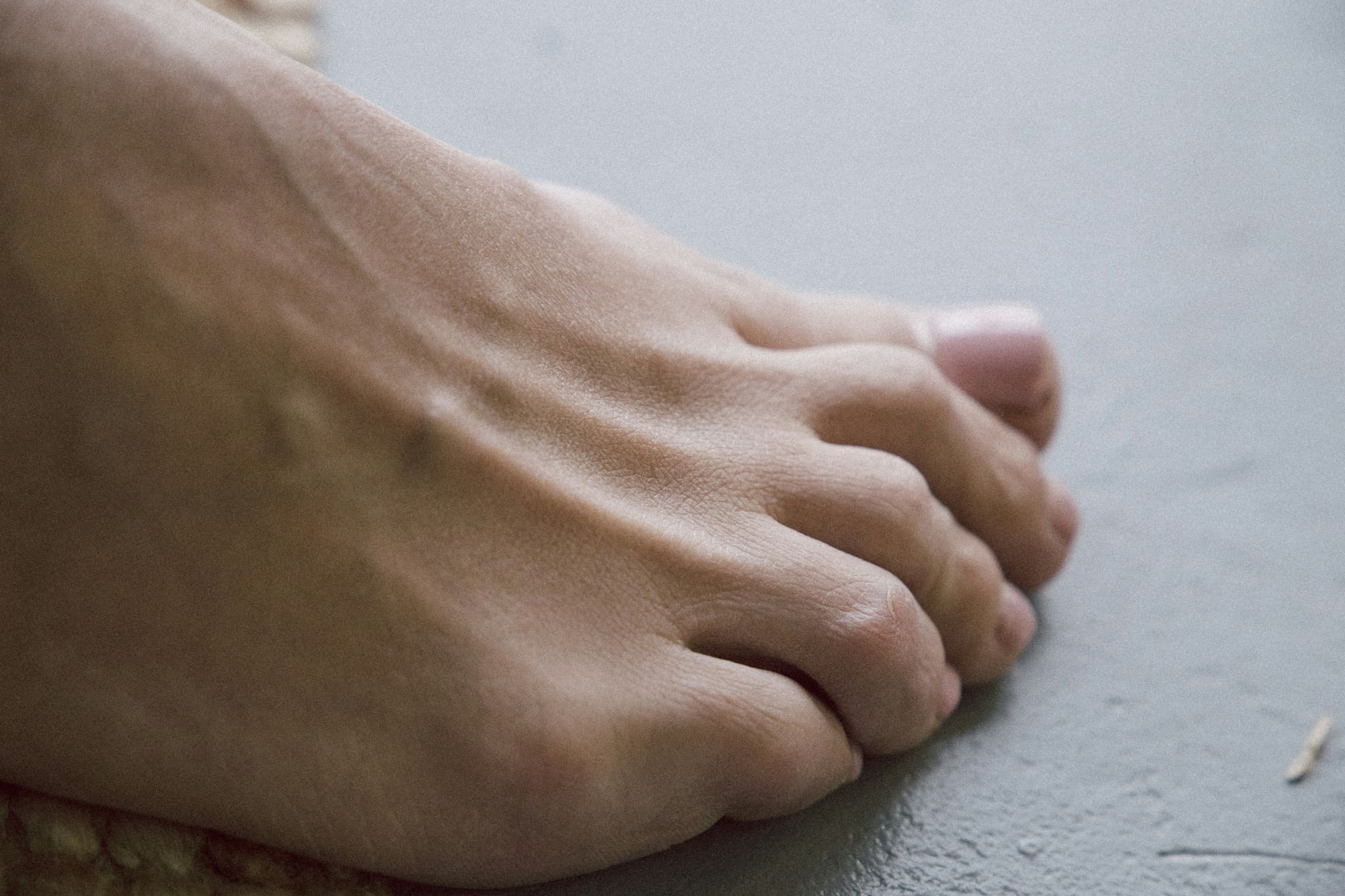If non-surgical treatments have failed to alleviate the pain in the ball of your foot, Morton’s Neuroma removal surgery may be an option to restore comfort and mobility. Read more about the condition below:
Indications for surgery
This surgery is generally reserved for those whose quality of life is significantly affected by the condition and is typically considered for patients who:
- Have not experienced relief from non-operative treatments such as custom orthotics, corticosteroid injections, or changes in footwear
- Continue to experience severe pain, numbness, or a burning sensation in the ball of the foot that limits daily activities
- Have a confirmed diagnosis of Morton’s Neuroma, often identified via clinical examination or imaging
What the surgery involves
Morton’s Neuroma removal is performed as a day procedure under general anaesthesia. The process includes:
- A small incision made on the top of the foot over the affected area
- The tight tissue squeezing the nerve is released
- The thickened nerve tissue (neuroma) is carefully removed, and the nerve is sent to a laboratory to confirm the diagnosis
- The incision is closed with stitches, and a dressing is applied.
- A local anaesthetic is often used to minimise pain after the procedure.

What to expect after surgery
Immediate Post-Operative Care
- Your foot will be bandaged, and you’ll be fitted with a supportive orthopaedic shoe to protect the surgical site
- You can bear weight as soon as you feel comfortable, though crutches may be helpful for 1–2 days
- Elevating your foot in the first week will reduce swelling and promote healing
A combination of local anaesthetics and oral painkillers is used to manage post-operative discomfort. Most patients find their pain significantly reduced within a week.
See Dr Lambers’ full post operative rehabilitation protocol below:
How long will you be in hospital?
Morton’s Neuroma surgery is performed as a day case. You will need to have someone to accompany you home, and you can be discharged a few hours after surgery.
Usual Recovery Times
- First 2 Weeks: Your foot will remain bandaged, and activity should be minimised. Avoid putting unnecessary weight on the affected foot and keep it elevated whenever possible.
- 2–3 Weeks: Stitches are removed, and you can gradually resume light, low-impact activities.
- 4–6 Weeks: Most patients can return to work, depending on the physical demands of their job. Light exercise or low-impact sports may also be resumed.
- 3+ Months: You can fully return to high-impact activities and sports, as directed by your surgeon or physiotherapist.
Potential risks
- Post-operative pain is generally minimal with proper medication, though some discomfort may persist
- Open surgery often causes swelling, manageable through foot elevation and limited activity
- Rare but serious risks include deep vein thrombosis or pulmonary embolism; preventive measures may be required for at-risk patients
- While uncommon, infections can occur
- Neuroma recurrence is rare but possible, often presenting as a stump neuroma or painful scar.
- Internal or external scarring may lead to discomfort, treatable with steroid injections or silicone dressings
Is Morton’s Neuroma surgery the right decision for you?
After discussing your situation with Dr Lambers, take the time to evaluate your options, discuss any concerns, and determine whether this procedure aligns with your long-term health and lifestyle goals. These decisions should never be rushed, and support is available to help you make the right choice.

